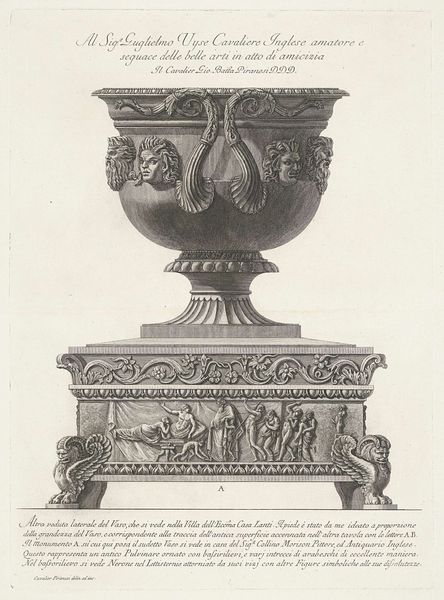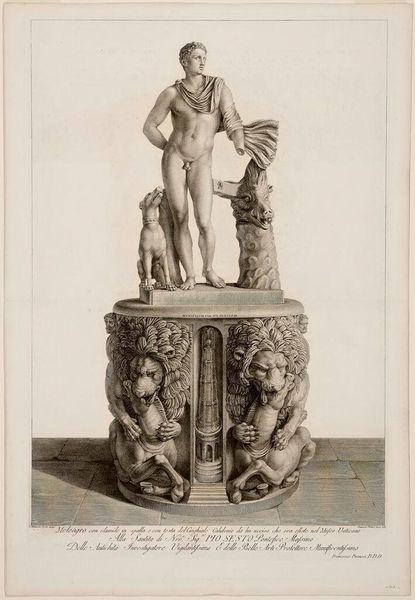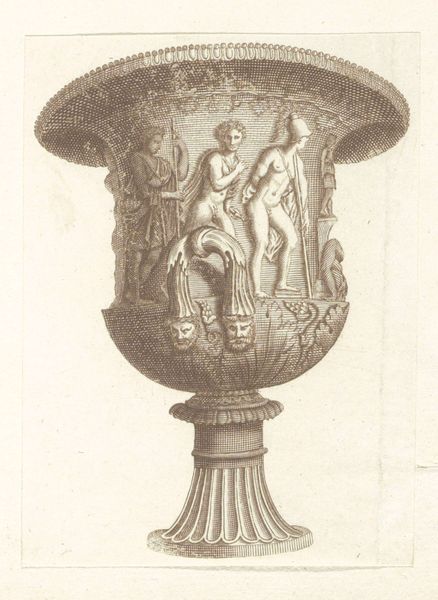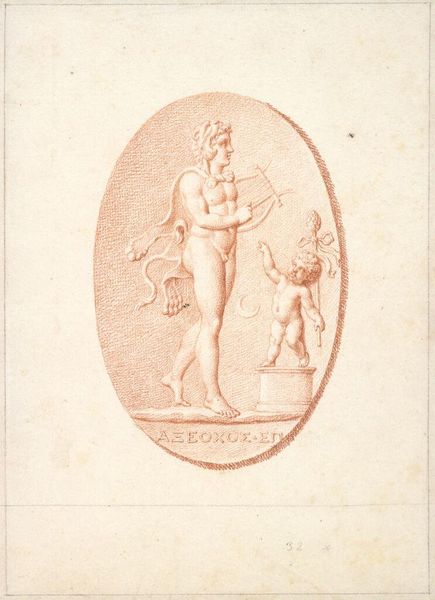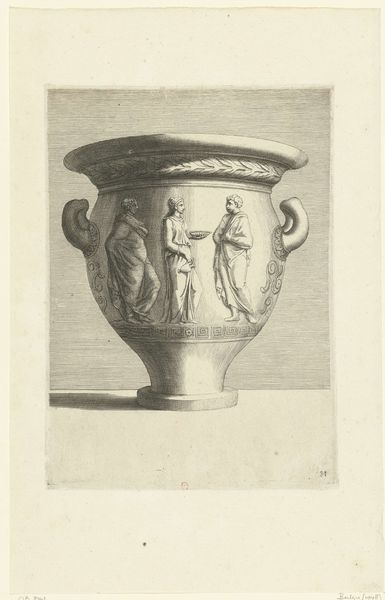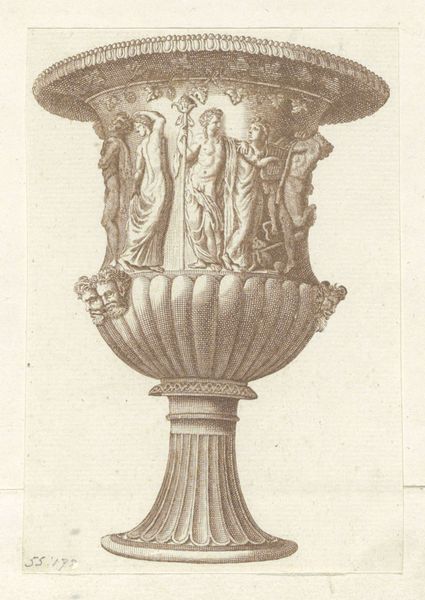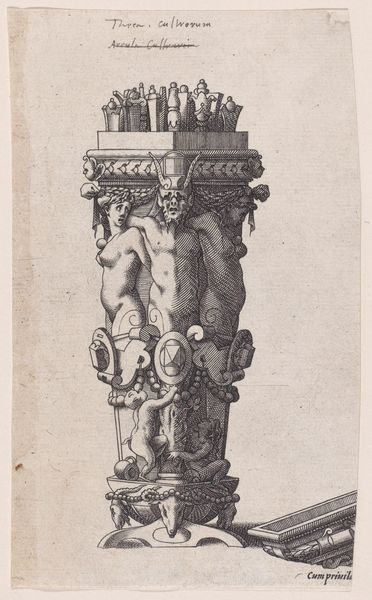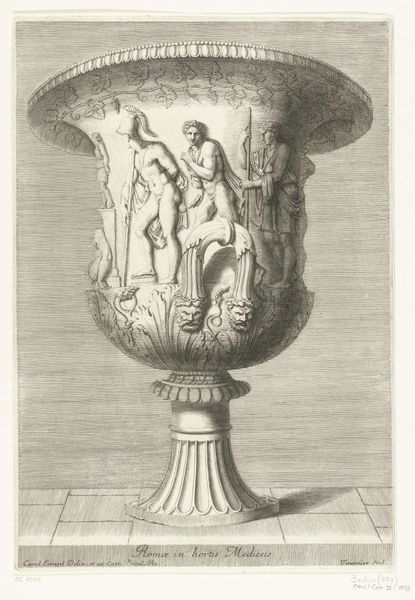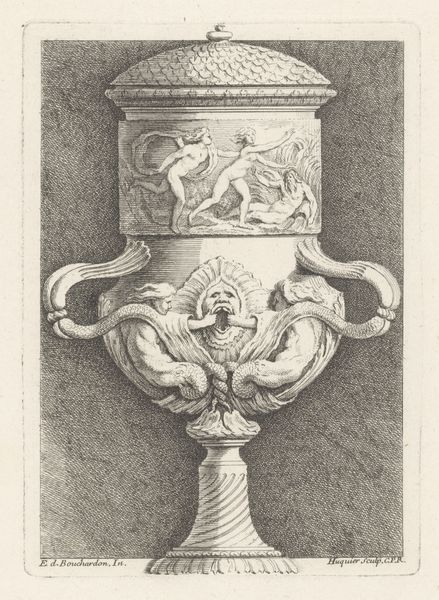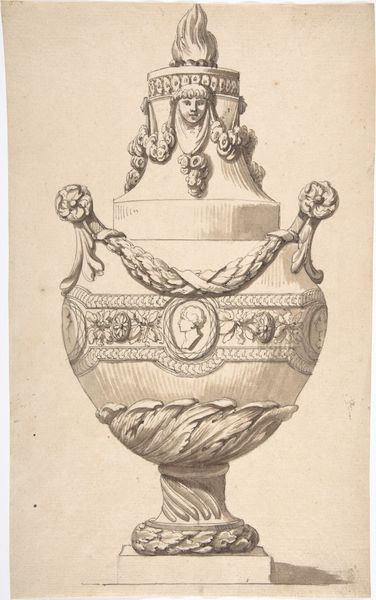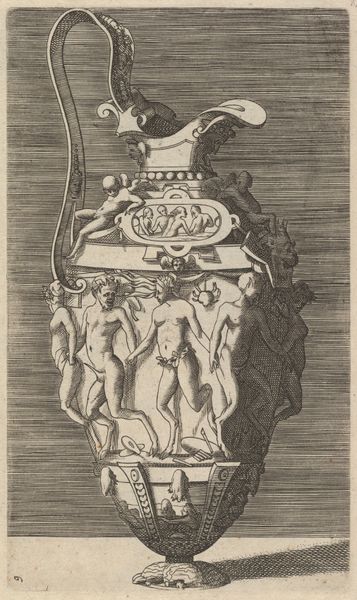
Dimensions: height 175 mm, width 115 mm
Copyright: Rijks Museum: Open Domain
This print of a relief with bacchanal was made by Antoni Zürcher, probably towards the end of the 18th century, using engraving. The stark black lines, precisely tooling an image into a copper plate, gives the image a powerful graphic impact. Engraving was critical to the circulation of imagery at this time, and it’s important to understand its social context. It’s easy to take printed pictures for granted today, but it required a highly specialized set of skills. You can see the marks of the engraver’s labor in every line of this print. Notice the incredible intricacy, and the way that the material and process influenced the aesthetic. The density of marks creates tone and shadow, while the crispness captures the neoclassical form. The artist had to not only be creatively skilled, but also technically proficient. So, next time you look at a print, consider not just the image itself, but the skilled labor and the wide distribution that it represents. By understanding these elements, we can fully appreciate its historical and cultural significance, and move beyond traditional notions of ‘high’ art.
Comments
No comments
Be the first to comment and join the conversation on the ultimate creative platform.
